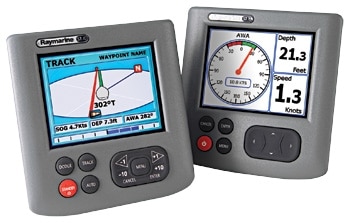
When runs to the fishing grounds are long and demanding, competition is fierce and fuel is dear, the best fishing often means the most efficient operation, and that’s what an autopilot can give you.
Recent developments in autopilot technology, in both hardware and software, have plunked this once-luxury instrument squarely into the realm of effective fishing. The elimination of the delicate and vulnerable rudder feedback sensor opened the door to wider acceptance on outboard fishing boats, and sophisticated software and network integration have eliminated many of the idiosyncrasies that typified the first generation of small-boat autopilots.
As is the case with any technological advance in fishing, competitors push the frontiers of how things get used, and in their wake, the weekend angler reaps the benefits. Here’s a look at the way three pros view their autopilots as an essential element of a winning strategy.
Fewer Moving Parts
Simrad recently introduced its version 2.0 software for the 8- and 12-inch NSE series multifunction displays. A whole raft of additional functions can be run from the NSE screen and rotary knob, including control of the autopilot.
The strength of the new system lies in the integration of the autopilot with the plotter, yielding a high degree of accuracy and efficiency. Typically, the autopilot demands a separate control head that must be used in conjunction with the multifunction display. With control coming directly from the MFD, it’s no longer necessary to move between two instruments to operate the ‘pilot.
We spoke with Simrad’s Dennis Hogan, who’d just returned from an on-water testing of the new gear on Mark Maus’ factory-outfitted Yellowfin 36.
“Maus believes it is much easier to control the autopilot from the display,” said Hogan. “With the rotary knob, he can do course adjustments by moving the cursor on the chart, hit go and activate the pilot from the same keypad. All integration is off the MFD.”
The separate control head can still be installed as a backup at the helm or as a stand-alone controller at a remote location, with or without an MFD. New NSE series instruments are loaded with the control-capable software. Existing machines can be updated with a download at simrad-yachting.com.
Accuracy and Economy
Software advances are also a critical component of the Raymarine autopilots X-5, X-10 and X-30, which cover fishing boats from 12 feet to over 50. Calibration and initial setup have been the bane of installers on first-generation autopilots, but Raymarine has made substantial improvements. The self-calibrating software functions as artificial intelligence, which actually gathers information throughout its lifetime, explains Raymarine’s Jim McGowan.
But all of that is invisible to tournament pro Conrad Lau, of Neptune Beach, Florida. He knows the autopilot as a useful tool for shortcutting the runs he has to make to stay in the money. “An example is running the Lakes route, west of Key West,” he says. “That helps me get out to the Gulf and avoid a lot of rough water. I also use it the Louisiana bayous.”
Lau also runs his ‘pilot for long-range economy: “When I run 60 miles to the Ledge or to the far side of the Gulf Stream, the autopilot compensates for current and wind, so I burn less fuel. Steering manually, the tendency to drift may take me 10 miles off track. With my triple outboards, that makes a difference.”
Less Stress

Garmin’s GHP 10 was built out from the venerable TR-1, and the changes have only made it more angler- and installer-friendly. “The Garmin is truly plug-and-play,” says Capt. Bill Platt of Custom Marine Electronics in League City, Texas. With 15 years of marine electronics installaton experience, Platt knows effortless installation. “Dockside setup is easy,” he says. “With the Garmin GHP, if you can read, you can do the setup. It’s that simple.”
As a competitive angler, Platt relies on the GHP 10, fishing “from North Carolina and around the Gulf through Alabama, Mississippi and Texas,” he says. Of particular interest is the way he uses the integrated trolling patterns, which is not for trolling but as a search strategy. “Say you see a boat two miles off and you know the angler is on a good fishing spot, a new one for you,” says Platt. “Once he takes off, you can set up the spiral pattern so you systematically cover the bottom until you find the spot.”
The GHC 10 remote is also a critical tool for Platt, especially when he’s short-handed and needs to control the boat and work the cockpit. “I can fish with two guys in a tournament,” he says. “I put the boat in gear, and with the remote, I can steer from anywhere.”
The remote control is a fixture around his neck no matter how he’s fishing. “When I’m billfishing, doing 8 or 9 knots, instead of being on the wheel all day long, I use the remote and the autopilot,” he says. “It makes life a lot easier.”









